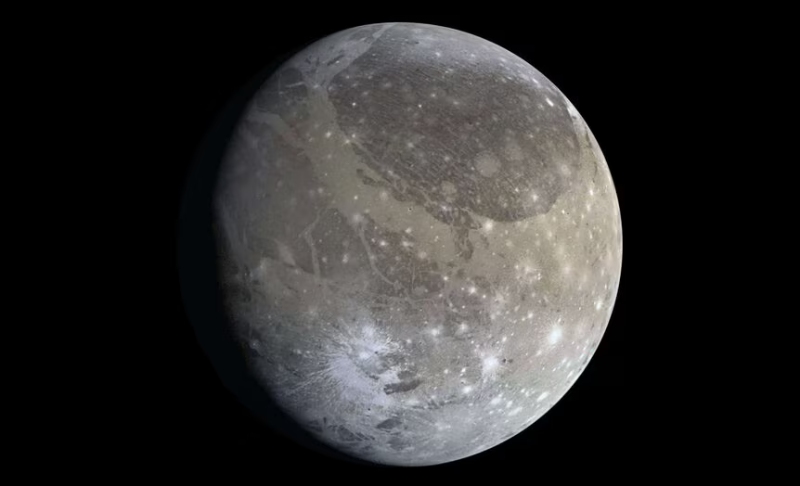Research suggests that Ganymede, the largest moon in our solar system, was struck by an ancient asteroid far more massive than the one that wiped out the dinosaurs on Earth 66 million years ago. This catastrophic impact occurred around 4 billion years ago, causing Ganymede, one of Jupiter’s nearly 100 moons, to rotate so that the massive crater now faces directly away from the gas giant.
According to computer models, the asteroid that struck Ganymede was approximately 185 miles in diameter and hit the moon at a steep angle of 60-90 degrees. The collision created a vast crater, initially up to 1,000 miles wide, which was partially filled in as debris from the impact fell back onto the moon’s surface.
Dr. Naoyuki Hirata, a planetary scientist from Kobe University in Japan, has pointed out that the distinctive furrows on Ganymede’s surface, which have long been believed to be remnants of concentric rings from the impact, may actually be evidence of the moon’s dramatic reorientation. However, until now, the size of the impact and its effect on Ganymede remained uncertain.
In his recent paper published in *Scientific Reports*, Hirata explains that the center of these furrows aligns almost directly opposite Jupiter. This alignment could be the result of the asteroid’s impact, which may have added significant mass to the impact zone, destabilizing Ganymede and causing it to reorient itself on its axis.
Hirata’s computer simulations support this theory, suggesting that the asteroid’s collision was so powerful that it caused Ganymede to rotate, leaving the impact site permanently on the moon’s far side. Much like Earth’s moon, Ganymede is tidally locked to its planet, meaning it consistently shows the same face to Jupiter.
The impact would have had profound consequences for Ganymede, which, at over 3,000 miles wide, is even larger than the planet Mercury. Hirata believes that the impact would have “completely removed the original surface” of Ganymede and likely affected its internal structure, which is thought to contain a hidden saltwater ocean.
While Hirata’s theory is compelling, alternative explanations cannot be entirely dismissed. However, the European Space Agency’s Juice probe, which embarked on its journey to Jupiter and its moons last year, may provide further evidence. As part of its mission, the Juice spacecraft will search for water pockets and other energy sources that are crucial for life on the Jovian moons.
Prof. Leigh Fletcher, a planetary scientist at the University of Leicester, noted that the ancient landscapes of Jupiter’s moons bear the marks of billions of years of cosmic bombardment, presenting a challenge to understanding these overlapping events. Fletcher praised Hirata’s approach as a “neat attempt to rewind the clock via computer simulations” to explain the scars across Ganymede.
He also emphasized that the Juice mission is well-equipped to explore Ganymede in detail, offering the best images yet of its fractured surface and potentially uncovering remnants of this massive impact and the subsequent reorientation of the moon.
Topics #Asteroid #dinosaur #Earth #galaxy #Ganymede #Jupiter #Jupiter's moon #Moon #news #solar system #Space #universe











